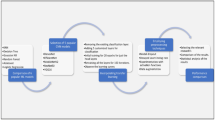Abstract
Recently, the digital image blind forensics technology has received an increasing attention in academic community. This paper aims at developing a new identification approach based on the statistical noise and exchangeable image file format (EXIF) information of image for images authentication. In particular, the authors can identify whether the current image has been modified or not by utilizing the relevance between noise and EXIF parameters and comparing the real values with the estimated values of the EXIF parameters. Experimental results validate the proposed method. That is, the detecting system can identify the doctored image effectively.
Similar content being viewed by others
References
Hussain M, Muhammad G, Saleh S Q, et al., Copy-move image forgery detection using multiresolution weber descriptors, The 8th International Conference on Singnal Image Technology and Internet Based Systems, 2012, 395–401.
Bora R M and Shahane N M, Image forgery detection through motion blur estimates, IEEE International Conference on Computational Intelligence and Computing Research, 2012, 1–4.
Li Y Z, Wu X M, Niu S Z, et al., Detecting forgeries of Chinese character based on camera calibration, The Journal of Beijing Universities of Posts and Telecommunications, 2012, 35(6): 16–19.
Johnson M K and Farid H, Exposing digital forgeries in complex lighting environments, IEEE Transactions on Information Forensics and Security, 2007, 2: 450–461.
Popescu A C and Farid H, Exposing digital forgeries by detecting traces of re-sampling, IEEE Trans. Signal Processing, 2005, 53(2): 758–767.
Popescu A C and Farid H, Exposing digital forgeries in color filter array interpolated images, IEEE Transactions on Signal Processing, 2005, 53(10): 3948–3959.
Valenzise G, Tagliasacchi M, and Tubaro S, Revealing the traces of JPEG compression antiforensics, IEEE Trans. Information Forensics and Security, 2013, 8(2): 335–349.
Huang F, Huang J, and Yun Q, Detecting double JPEG compression with the same quantization matri, IEEE Trans. Information Forensics and Security, 2010, 5(4): 848–856.
Johnson M K and Farid H, Detecting photographic composites of people, Digital Watermarking, Lecture Notes in Computer Science, 2008, 5041: 19–33.
Kee E, O’Brien J, and Farid H, Exposing photo manipulation with inconsistent shadows, ACM Transaction on Graphics, 2013, 32(4): 1–11.
Zhao J and Kang W, Detection algorithm of image forgery based on principal components analysis of projection data, Computer Engineering, 2012, 38(10): 203–205.
Kee E, Johnson M K, and Farid H, Digital image authentication from jpeg headers, IEEE Trans. Inf. Forensics Security, 2011, 6(3): 1066–1075.
Fan J Y, Cao H, and Sattar F, Modeling the EXIF-image correlation for image manipulation detection, IEEE Press, 2011, 1945–1948.
Lü J H, Chen G R, and Zhang S C, A unified chaotic system and its research, Journal of the Graduate School of the Chinese Academy of Science, 2003, 20(1): 123–129.
Lü J H, Mathematical models and synchronization criterions of complex dynamical networks, Journal of Systems Engineering — Theory and Practice, 2004, 24(4): 17–22.
Wang P, Li D M, Wu X Q, and Lv J H, Estimating the ultimate bound for the generalized quadratic autonomous chaotic systems, Proceedings of the 29th Chinese Control Conference, 2010, 791–795.
Holst G C and Lomheim T S, CMOS/CCD Sensors and Camera Systems, Society of Photo Optical, 2007.
Author information
Authors and Affiliations
Corresponding author
Additional information
This work was supported by the National Natural Science Foundation of China under Grant Nos. 61370195 and 11101048, Beijing Natural Science Foundation under Grant No. 4132060, and the National Cryptography Development Foundation of China under Grant No. MMJJ201201002.
This paper was recommended for publication by Editor LÜ Jinhu.
Rights and permissions
About this article
Cite this article
Sun, X., Li, Y., Niu, S. et al. The detecting system of image forgeries with noise features and EXIF information. J Syst Sci Complex 28, 1164–1176 (2015). https://doi.org/10.1007/s11424-015-4023-2
Received:
Revised:
Published:
Issue Date:
DOI: https://doi.org/10.1007/s11424-015-4023-2




